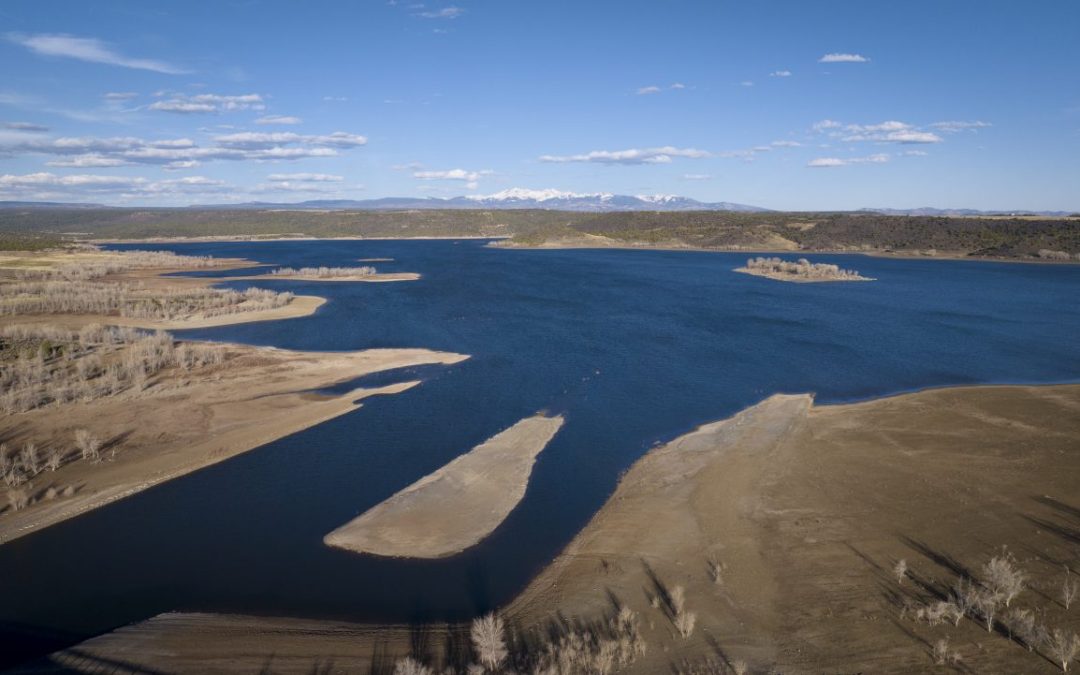A sudden-onset drought in northern Colorado helped prime the region’s forests for wildfires, showing how quickly conditions can change even after a “miracle May” of snow.
Colorado experienced a typical snow year, and some regions even saw a favorable bump of precipitation in May. But some of the wettest conditions on record could not stand up to the sudden swing into hot and dry conditions in June and July in northern Colorado. Those conditions laid the foundation for three wildfires that ignited at the end of July, climate and water experts said.
“Sometimes they call these flash droughts, when it turns so radically like that. That’s what we’ve done late in spring and the summer,” said David Barjenbruch, a meteorologist for the National Weather Service in Boulder. “The lack of precipitation, the dry fuels — all that makes, obviously, a more dangerous wildfire season.”

North-central Colorado, around the Laramie and North Platte river basins, has been enduring the driest period on record since 1893, according to Barjenbruch while looking at the period from May 1 through Aug. 6. During that period, Fort Collins only received 1.64 inches of precipitation.
This region is the site of the 9,700-acre Alexander Mountain fire, which erupted west of Loveland in Larimer County at the end of July. Leading up to the fire, the area was experiencing low humidity levels — 9% to 11%, Barjenbruch said.
That’s a big difference from the January through April period, which was the fifth-wettest on record with 6.14 inches of precipitation, Barjenbruch said.
The Laramie and North Platte river basins saw big boosts of snowfall in May, according to Natural Resources Conservation Service records. In fact, the region’s snowpack this year was well above-average, although it melted quickly in the second half of June. Precipitation was 101% of the 30-year median as of May 1.
The region did not show any signs of drought at the end of April, according to the U.S. Drought Monitor. By the end of July, it was in moderate to severe drought.
“Now everything is browned out. The fine fuels are dry. The forest conditions are deteriorating,” Barjenbruch said. “There’s not as much moisture, which allows fires to grow faster and hotter and spread more quickly.”
Dry weather also laid the foundation for the 1,600-acre Stone Canyon fire, which is 100% contained near Lyons in Boulder County. The area experienced the same sudden onset of drought: It went from the second-wettest period on record for January through April to the driest on record for May 1 through Aug. 6, Barjenbruch said.
Cooler temperatures, scattered showers and storms are in the forecast for the weekend and next week, which helped fire crews fully contain the Quarry fire in Jefferson County Thursday and should help with the ongoing containment efforts for the the Alexander Mountain.
Storms can also come with an increased risk of flash flooding, so residents and travelers near the burn scars or in flood-prone areas should stay alert for road closures and local alerts, Barjenbruch said.
A flash flood warning was issued Wednesday afternoon for the Alexander Mountain burn scar near the Big Thompson Canyon after a thunderstorm developed over the area.

What are conditions around Colorado?
Farmers, ranchers and water managers are closely watching for drought and precipitation as Colorado endures the dog days of summer and the latter half of the irrigation season.
Statewide, the summer has been warmer than usual. This was the third-warmest June on record out of 130 years of data from the National Oceanic and Atmospheric Administration, said Joel Atwood, a hydrologist for the Natural Resources Conservation Service’s Colorado Snow Survey program.
Most of the state saw normal precipitation in June compared with the historical record, except the Laramie, North Platte and South Platte river basins in north and northeastern Colorado, Atwood said. July’s precipitation was below normal across the board.
These conditions set the stage for other fires around the state, like the 4,155-acre Bucktrail fire, near Nucla in Montrose County.
As climate and water experts get more data about this year’s water conditions, they’re also starting to spot patterns in how the flow of water through streams and rivers matched up with the forecasts based on the snowpack. These streamflow forecasts are vital for water managers as they decide how to store and release water in reservoirs.
In past years, like 2020, forecasted flows were much higher than actual water supplies — a discrepancy that could be explained by different factors, like thirsty soils and plants sucking up water before it can reach streams.
“There are some enigmas to try to understand a little bit better, but I would say that, by and large, it was a fairly average peak runoff season and a fairly well-forecasted peak runoff season,” said Peter Goble, a climatologist for the Colorado Climate Center at Colorado State University.
One of those enigmas was in southwestern Colorado. Water managers in the Dolores River Basin were thrown a curveball when forecasts for the summer’s streamflows turned out to be much higher than the actual streamflows.
In early April, the federal forecasts based on monitoring stations in the mountains projected around 200,000 acre-feet of water flowing through the Dolores River Basin. In reality, the basin saw 42% less than the forecast, about 115,000 acre-feet.
One acre-foot roughly equals the annual use of two to three households.
April forecasts based on aerial basinwide mapping, which indicated about 116,000 acre-feet of water, helped clue reservoir managers into the discrepancy, according to Airborne Snow Observatories, Inc., which does aerial snowpack monitoring around the state.
Farmers and ranchers who depend on water from McPhee Reservoir were still able to receive a full allocation of water this season. The next big question will be to see how much water can be saved in the reservoir for next summer, according to the Dolores Water Conservancy District.
Looking ahead to the fall, Goble is tracking signs of a La Niña, a climate pattern on the Pacific Ocean which tends to come with warmer and drier conditions in Colorado.
“The developing La Niña is not good news if you’re looking at a more seasonal outlook,” he said.


 Print
Print